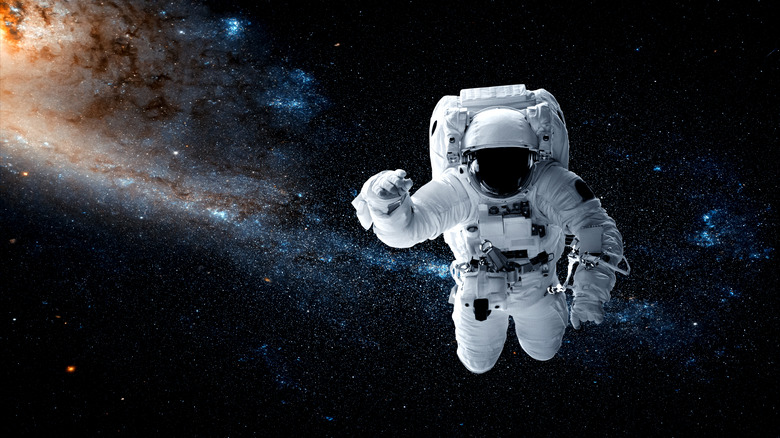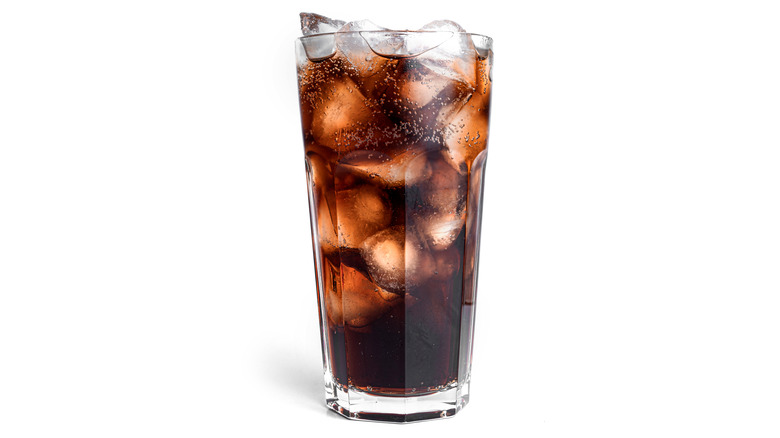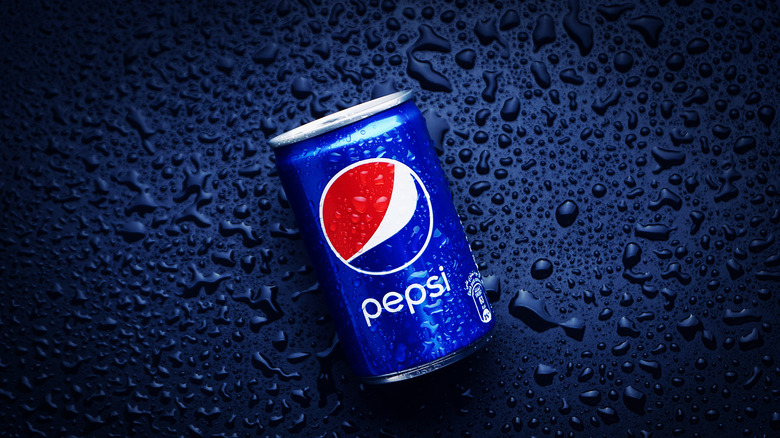The Reason Why You're Not Allowed To Have Soda In Space
There are a fair number of restrictions placed on what astronauts can and can't bring into space. This is to ensure that they stay safe while out of Earth's atmosphere, where things don't exactly work the same way — including food. This is because many foods that act a certain way on Earth, as well as in a person's digestive system, may cause issues when in space. This is especially true for a certain beverage we tend to take for granted down here: Soda.
Although astronauts may be used to drinking fizzy beverages on Earth, it's something they must forego when on a space mission due to safety concerns. You may be able to guess that it has to do with the carbonation aspect, but what exactly happens when you bring a carbonated beverage into space that makes it unsafe for astronauts to consume?
What soda does in space
In carbonated beverages, the gas that makes up the bubbles in soda is carbon dioxide. In order for soda to be soda, these bubbles need to be able to rise to the top of the beverage to release that CO2. For this to work, the force of gravity is needed for the bubbles will rise out of the heavier liquid. As NASA explains, in space, the bubbles instead are randomly dispersed through the soda, making for what would likely turn to foam.
But space also impacts how soda is digested. Typically when we drink soda, the carbon dioxide will find its way out of us in the form of a burp, and we usually don't drink much of the gas since it escapes as described above. However, if an astronaut were to drink soda in space, they would be drinking much more CO2 since it can't escape the liquid as easily. This may cause much more burping, which can be difficult in space. As explained in Forbes, when burps happen in space, there is usually some liquid accompanying it as liquids and gases have a harder time separating in space.
Coca-Cola and Pepsi were sent to space
Despite the fact that soda is typically not allowed in space, there was a time when two of the biggest soda brands traveled along with astronauts. In 1985, Coca-Cola and Pepsi both created a special "space-proof" can that would allow the soda to stay fizzy as astronauts drank. Both of the technologies utilized plastic bags filled with carbon dioxide to force the soda out of the cans while keeping them carbonated. Four of these were sent into space onto the Challenger space shuttle, as reported by The Washington Post.
This didn't, however, stop the issue of digestion with a fizzy beverage in space. The Coca-Cola and Pepsi space cans were more of a novelty publicity stunt than anything, and weren't continuously allowed on space missions. But, despite soda no longer being considered a viable space beverage, we can say that astronauts have tested drinking soda in space at least once.


